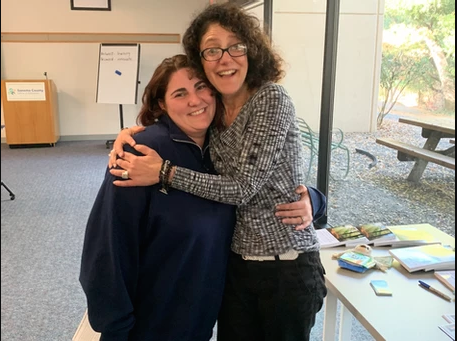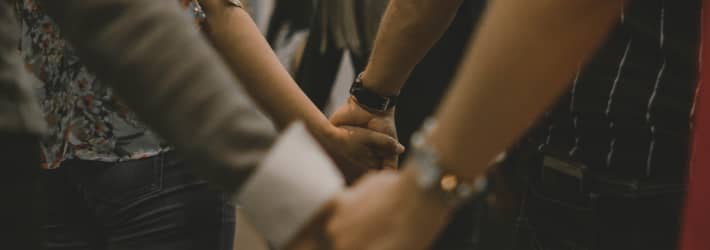Boundaries: Difficult to Establish, Necessary for Relationship
By Laura Beth DeHority, LMFT
How could your family relationships benefit from healthy boundaries?
- Have you finished a project for your child because it was easier than arguing?
- Have you accepted part of the blame for your child’s behaviors?
- Have you avoided negative issues out of fear of your child’s response?
- Are there areas where you have given your child more than one “last chance”?
- Have you begun to feel that you’ve reached the end of your rope?
- Has the situation in your home reached a point that you have anxiety when there?
- Are there other areas where you feel “dread”? (common one: a call from school)
- Have you noticed growing resentments in other family members? A sense of others physically or emotionally distancing themselves from your child?
- Have you noticed an increase in negative behaviors?
If you answered “yes” to one or more of these questions, it is a good time to think about what boundaries are, what they are not, and how they might restore peace in your home.
Boundaries are lines that establish what one person will accept of another person’s actions and words. Boundaries are created to keep out toxic behaviors such as abuse, manipulation, harassment and cruelty. Boundaries encourage the kind of treatment that will be accepted. Boundaries are necessary in healthy, loving relationships. They are made in love (not revenge or to shame or punish) and have the best interest of the child and family in mind.
Boundaries are difficult for most foster children, because they often come from environments without healthy limits and relationships. They may struggle to apply proper boundaries in their interaction with other people. As a foster or adoptive parent, it is imperative to help them recognize and respect boundaries with other people and to define and enforce boundaries with how others relate to them.
Boundaries exist in four areas: physical, material, mental and emotional.
Physical boundaries include personal space, limitations concerning who can touch them, how they can be touched, where they can be touched, and when they can be touched. Personal space is unique to each of us as individuals. Material boundaries relate to belongings. Some people may not feel comfortable loaning or sharing belongings. In such cases, it is also not appropriate to ask. Mental boundaries are respecting that other people may not share the same thoughts, values, opinions, and beliefs as you. Any attempt to coerce them into having the same thoughts, values opinions and beliefs may result in arguments or bullying behavior. Emotional boundaries recognize that all people have emotions and are affected by the actions of other people. Everyone is responsible for his or her own emotions and choices. Control and manipulation are never okay.
Establishing healthy boundaries is not easy with high-needs children.
It often leads to painful conflict. Coming from an environment without healthy boundaries and into an environment with healthy boundaries will rock their world. Neurologically, it changes their brains. It will feel scary and not loving at all. Changes are incremental and slow, so hold your ground with consistent, loving boundaries.
When violations occur, reassure your child that the consequence of this is a loss of fellowship, not the loss of the relationship. This is a needed distinction with high-needs kids. Boundaries go both ways. Everyone is entitled to boundaries. Teach the child to identify when they are feeling like a boundary is being crossed. For instance, do they feel upset or uncomfortable when they are asked to do certain things by adults? It may indicate that they are being asked to do something inappropriate. Teach them that there are times when they need to say no for their own safety, health, or well-being.
Remember the old saying, “Too much of a good thing isn’t a good thing?” It holds true with boundaries. Very high boundaries can lead to shutting people out of life and preventing life-giving friendships. This is common in children who have been abused. If you see this pattern with your child, help them to discern trustworthy people and encourage them to allow these people into their lives.
In the words of Dr. Deborah Langebacher, a wise child psychiatrist, “Boundaries make a child feel safe.”
As a foster parent, you are in the unique position of helping a child identify and enforce boundaries that may not have been adequately defined before. Most often, when they grow older, they will respect and value your gentle guidance in these areas.
10 Steps to Setting Boundaries:
-
Clearly identify your boundary.
Get really clear with yourself about what the boundary is that you need to set. If you aren’t clear, you won’t be able to communicate your expectations. A wishy-washy boundary is not effective. Spend time figuring out what you need before taking action.
-
Understand why you need the boundary.
This is your motivation for setting the boundary. If you don’t have a compelling reason, why are you going to follow through with setting a boundary that’s out of your comfort zone?
-
Be straight forward.
Don’t be cryptic or purposefully vague thinking you’re going to spare someone’s feelings or avoid a conflict. The kindest and most successful approach is to be direct. Say what you mean and mean what you say.
-
Don’t apologize or give long explanations.
This kind of behavior undermines your authority and gives the impression that you’re doing something wrong that requires an apology or justification.
-
Use a calm and polite tone.
Keep your own anger in check. Don’t try to set boundaries in the middle of an argument. You want your message to be heard. Yelling, sarcasm, or a condescending tone all put others on the defensive and distract from the real issues.
-
Start with tighter boundaries.
It’s always easier to loosen up tight boundaries than it is to tighten loose boundaries.
-
Address boundary violations early.
Small problems are always easier to manage. Don’t wait until someone’s violated your boundary a dozen times before you speak up. It’s neither fair to assume that others know your boundaries until you’ve explained them, nor is it fair to “change the rules.”
-
Don’t make it personal.
Setting a boundary isn’t a personal attack. Use an “I statement” and leave the personal attack out.
-
Use a support system.
Starting to set boundaries is tough! It can bring up a lot of questions, uncomfortable feelings, and self-doubt. Having a support system is invaluable whenever you’re doing something challenging.
-
Trust your intuition.
Be sure to slow down and tune into yourself. Pay attention to what you’re feeling. What is your gut telling you? If it feels wrong, make a change.
Source: https://blogs.psychcentral.com/imperfect/2016/05/10-steps-to-setting-healthy-boundaries/
Laura Beth DeHority, LMFT is an adoptive parent and therapist in private practice who specializes in working with caregivers and families who are touched by all forms of special needs. She works with individuals, couples, siblings, groups and multi-generational families to provide support in areas of family roles, communication, stress reduction, anxiety, depression, grief, addiction and trauma release.









